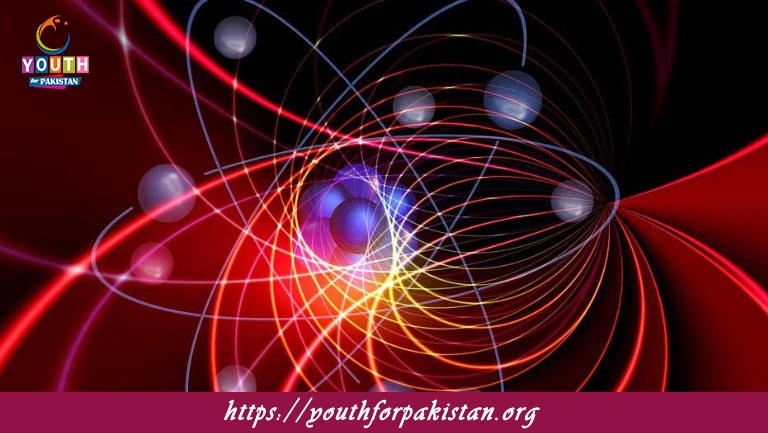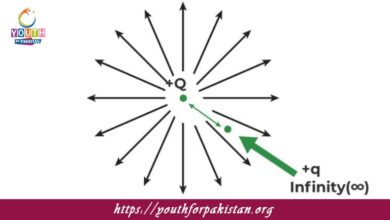Dawn Of Modern Physics MDCAT MCQs with Answers

Welcome to the Dawn Of Modern Physics MDCAT MCQs with Answers. In this post, we have shared Dawn Of Modern Physics Multiple Choice Questions and Answers for PMC MDCAT 2024. Each question in MDCAT Physics offers a chance to enhance your knowledge regarding Dawn Of Modern Physics MCQs in this MDCAT Online Test.
Dawn Of Modern Physics MDCAT MCQs Test Preparations
Who is considered the father of modern physics?
a) Isaac Newton
b) Albert Einstein
c) Niels Bohr
d) Max Planck
Which theory did Albert Einstein introduce in 1905 that revolutionized physics?
a) Quantum Mechanics
b) General Relativity
c) Special Relativity
d) Classical Mechanics
What is the central concept of Max Planck’s quantum theory?
a) Light as a wave
b) Energy quantization
c) Relativity of time
d) Electron orbits
Which experiment provided evidence for the particle-like nature of light?
a) Young’s double-slit experiment
b) Rutherford gold foil experiment
c) Millikan oil drop experiment
d) Photoelectric effect experiment
What is the name of the principle that states it is impossible to simultaneously know the exact position and momentum of a particle?
a) Heisenberg Uncertainty Principle
b) Pauli Exclusion Principle
c) Planck’s Principle
d) Schrödinger’s Equation
Who proposed the Bohr model of the atom?
a) Werner Heisenberg
b) Niels Bohr
c) Erwin Schrödinger
d) Louis de Broglie
What was the main focus of the Rutherford gold foil experiment?
a) The wave nature of light
b) Electron orbits
c) Atomic nucleus structure
d) Photoelectric effect
Which physicist is known for developing the wave equation fundamental to quantum mechanics?
a) Albert Einstein
b) Niels Bohr
c) Erwin Schrödinger
d) Max Planck
Which concept did Louis de Broglie introduce that suggests particles have wave-like properties?
a) Wave-particle duality
b) Quantum entanglement
c) Relativity
d) Uncertainty principle
What is the significance of the photoelectric effect in quantum physics?
a) It demonstrated the particle nature of light
b) It showed light’s wave nature
c) It proved the existence of the atomic nucleus
d) It explained atomic spectra
Which fundamental principle did Paul Dirac contribute to quantum mechanics?
a) Quantum field theory
b) Special relativity
c) Uncertainty principle
d) Quantum entanglement
Who formulated the exclusion principle stating that no two electrons can occupy the same quantum state simultaneously?
a) Werner Heisenberg
b) Albert Einstein
c) Wolfgang Pauli
d) Niels Bohr
Which phenomenon did the Compton scattering experiment help to explain?
a) Light’s wave nature
b) Electron diffraction
c) Photons and their energy-momentum relationship
d) Atomic emission spectra
What was the main contribution of the Millikan oil drop experiment?
a) Determining the charge of the electron
b) Proving the wave nature of light
c) Developing quantum mechanics
d) Observing electron orbits
Who first proposed the idea of quantized energy levels in atoms?
a) Albert Einstein
b) Max Planck
c) Niels Bohr
d) Erwin Schrödinger
What is the main difference between classical and quantum mechanics?
a) Quantum mechanics includes probabilistic outcomes
b) Classical mechanics includes wave-particle duality
c) Quantum mechanics does not use mathematics
d) Classical mechanics does not involve energy quantization
What did the Stern-Gerlach experiment demonstrate?
a) Wave-particle duality
b) Electron charge
c) Quantum superposition
d) Quantized angular momentum
Who developed the concept of wavefunctions to describe particles in quantum mechanics?
a) Albert Einstein
b) Niels Bohr
c) Erwin Schrödinger
d) Max Planck
Which physicist introduced the concept of quantized angular momentum?
a) Louis de Broglie
b) Max Planck
c) Niels Bohr
d) Paul Dirac
What does the term “quantum entanglement” refer to?
a) Particles being in superposition
b) Particles being connected such that the state of one affects the state of another
c) Particles’ wave functions collapsing
d) Particles’ energy levels being discrete
Which theory explains the gravitational interaction between massive bodies in modern physics?
a) Special Relativity
b) Quantum Mechanics
c) General Relativity
d) Quantum Field Theory
Who was awarded the Nobel Prize for his explanation of the photoelectric effect?
a) Niels Bohr
b) Albert Einstein
c) Max Planck
d) Werner Heisenberg
What did Planck’s constant represent in quantum theory?
a) The energy of a photon
b) The wavelength of light
c) The quantization of energy levels
d) The charge of an electron
In which experiment did Niels Bohr provide his model of the atom?
a) Rutherford gold foil experiment
b) Young’s double-slit experiment
c) Millikan oil drop experiment
d) Photoelectric effect experiment
What does the Heisenberg Uncertainty Principle fundamentally state about particles?
a) They can exist in multiple states simultaneously
b) Their properties cannot be precisely determined at the same time
c) Their energy levels are continuous
d) They do not have a well-defined position
What is the significance of the E=mc² equation introduced by Einstein?
a) It describes the relationship between energy and mass
b) It defines the speed of light
c) It explains wave-particle duality
d) It calculates atomic energy levels
What is the purpose of the Schrödinger equation in quantum mechanics?
a) To determine the position of particles
b) To describe how the quantum state of a system changes over time
c) To measure particle charge
d) To calculate the mass of particles
Which concept did Louis de Broglie introduce in his work?
a) Energy quantization
b) Wave-particle duality
c) Quantum superposition
d) Uncertainty principle
What did the Michelson-Morley experiment aim to detect?
a) The presence of the ether
b) The quantization of light
c) The speed of light in a vacuum
d) The charge of an electron
Which physicist is known for the concept of quantum tunneling?
a) Max Planck
b) Albert Einstein
c) Richard Feynman
d) Niels Bohr
What is the primary focus of quantum field theory?
a) The interaction between quantum particles and fields
b) The structure of atomic nuclei
c) The behavior of classical particles
d) The unification of gravity with quantum mechanics
Which physicist is known for the development of quantum electrodynamics (QED)?
a) Paul Dirac
b) Richard Feynman
c) Niels Bohr
d) Werner Heisenberg
The concept of “quantum superposition” is best illustrated by which experiment?
a) Stern-Gerlach experiment
b) Double-slit experiment
c) Rutherford gold foil experiment
d) Millikan oil drop experiment
Which scientific principle asserts that energy is quantized into discrete packets called quanta?
a) Planck’s principle
b) Relativity principle
c) Uncertainty principle
d) Pauli exclusion principle
Which aspect of atomic theory did Bohr’s model explain?
a) Atomic spectra
b) Quantum entanglement
c) Photon emission
d) Electron diffraction
Who was awarded the Nobel Prize for the discovery of the electron?
a) J.J. Thomson
b) Ernest Rutherford
c) Albert Einstein
d) Niels Bohr
Which of the following concepts is fundamental to the theory of general relativity?
a) Energy quantization
b) Curvature of spacetime
c) Wave-particle duality
d) Electron orbitals
In quantum mechanics, what does a wavefunction describe?
a) The exact position of a particle
b) The probability distribution of a particle’s properties
c) The energy levels of an atom
d) The speed of light
Which of the following is a major development in quantum mechanics by Max Planck?
a) Quantum entanglement
b) Planck’s constant
c) Wave-particle duality
d) Theory of relativity
What does the term “quantum leap” refer to in quantum physics?
a) A sudden transition between energy levels of an atom
b) A new particle discovery
c) A theoretical physics breakthrough
d) The unification of quantum mechanics and relativity
If you are interested to enhance your knowledge regarding Physics, Chemistry, Computer, and Biology please click on the link of each category, you will be redirected to dedicated website for each category.





